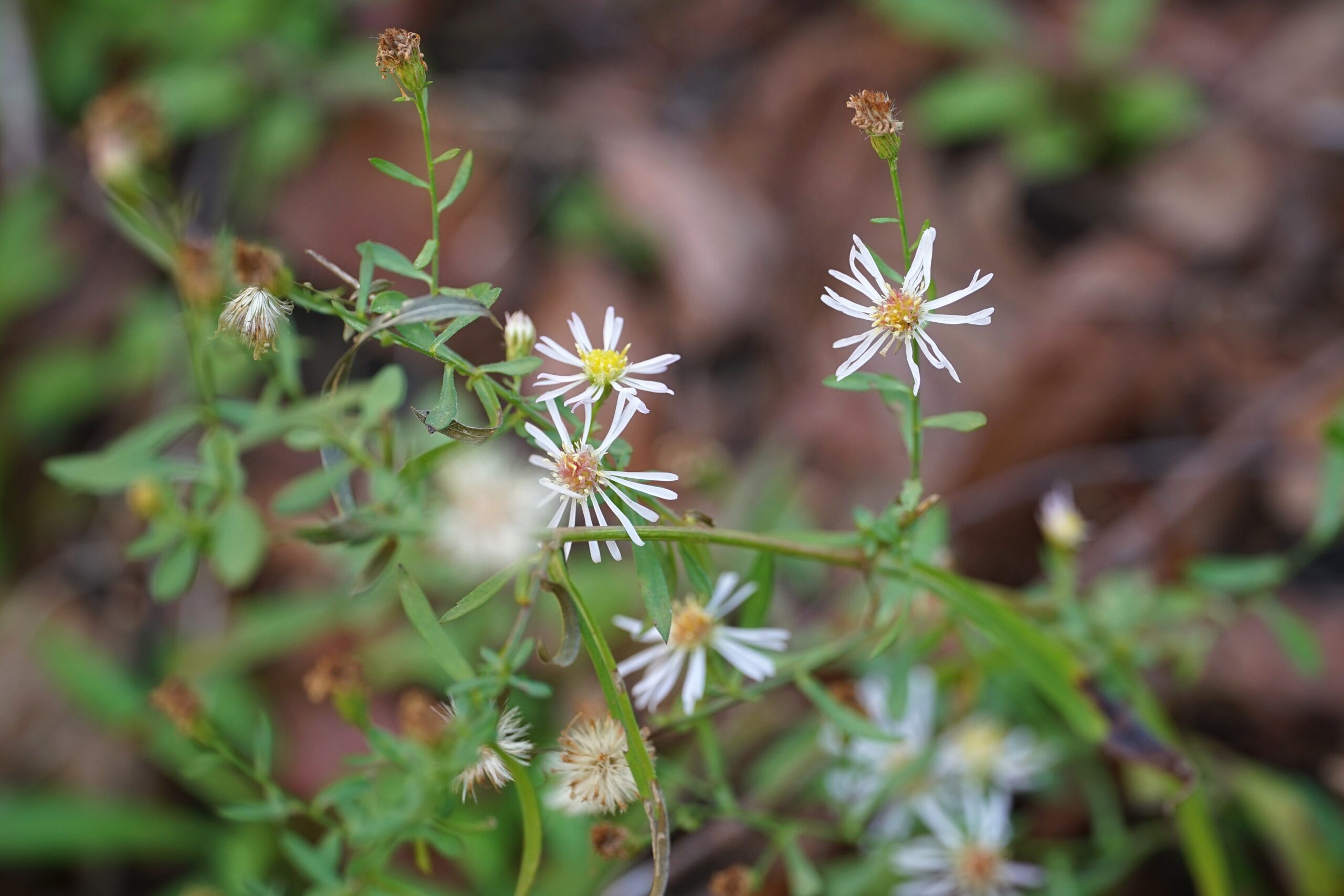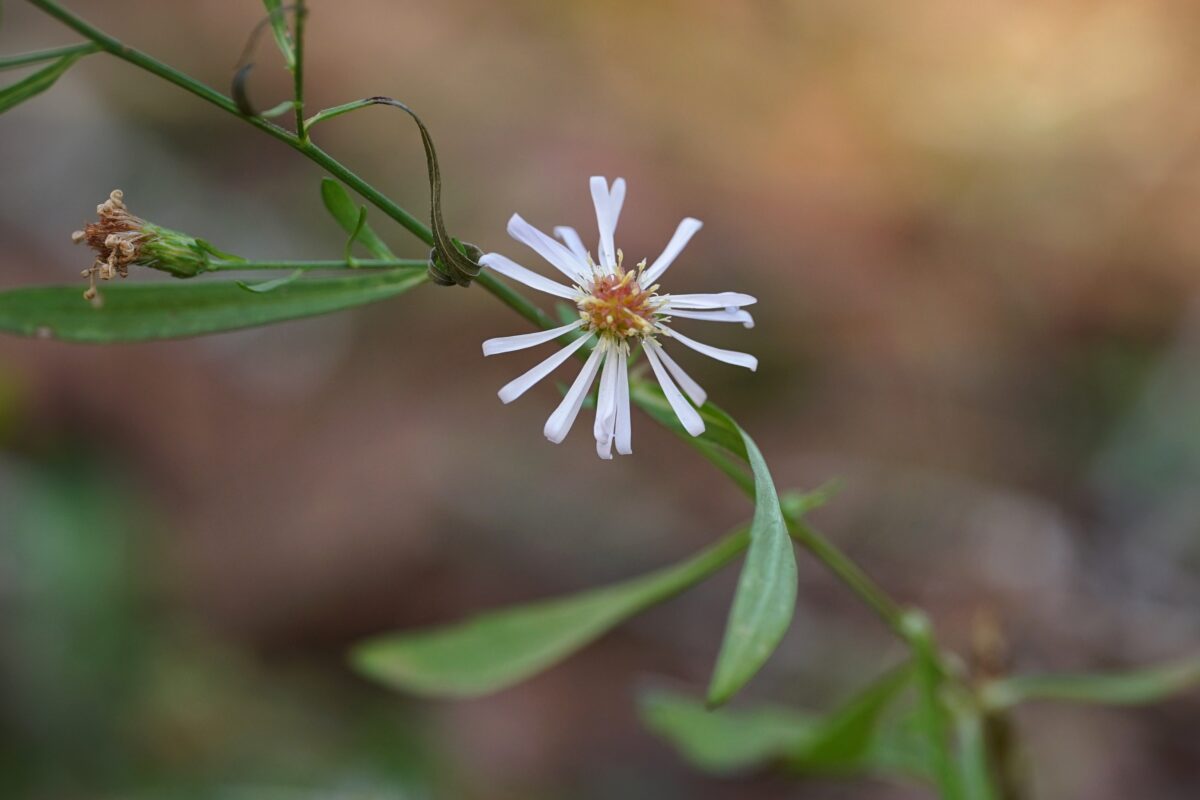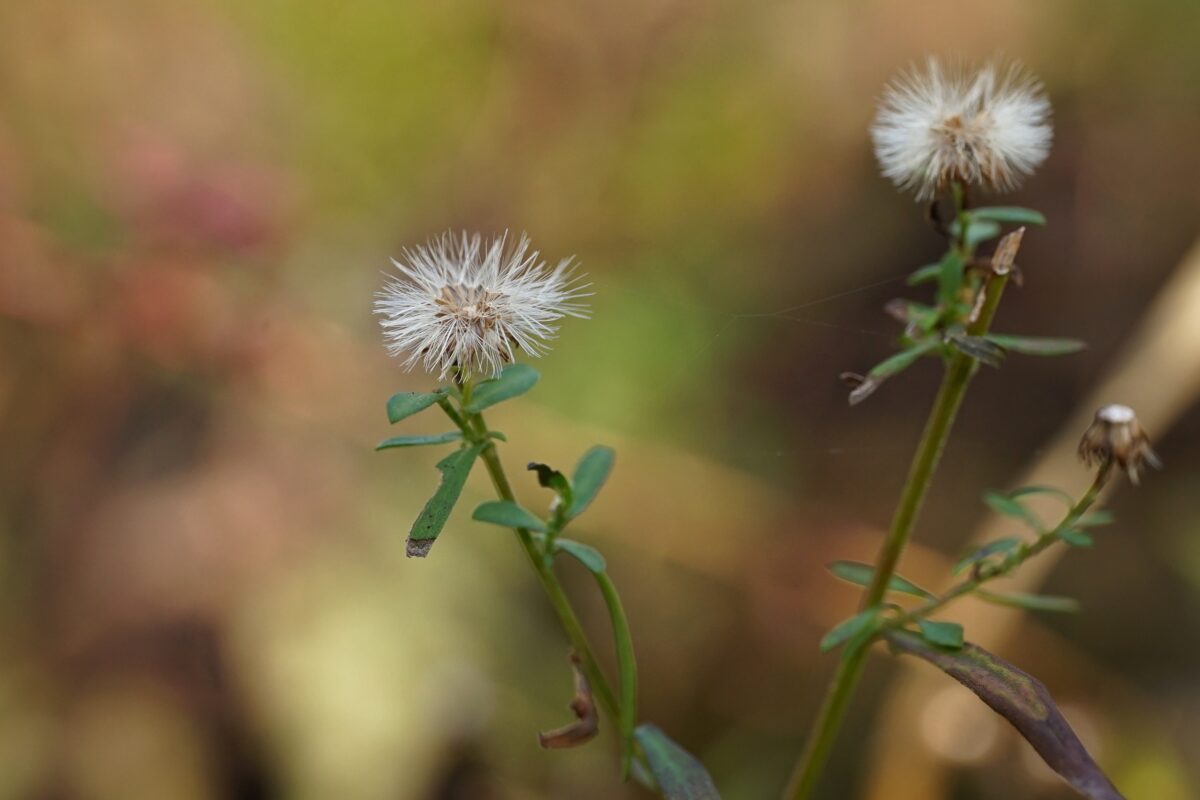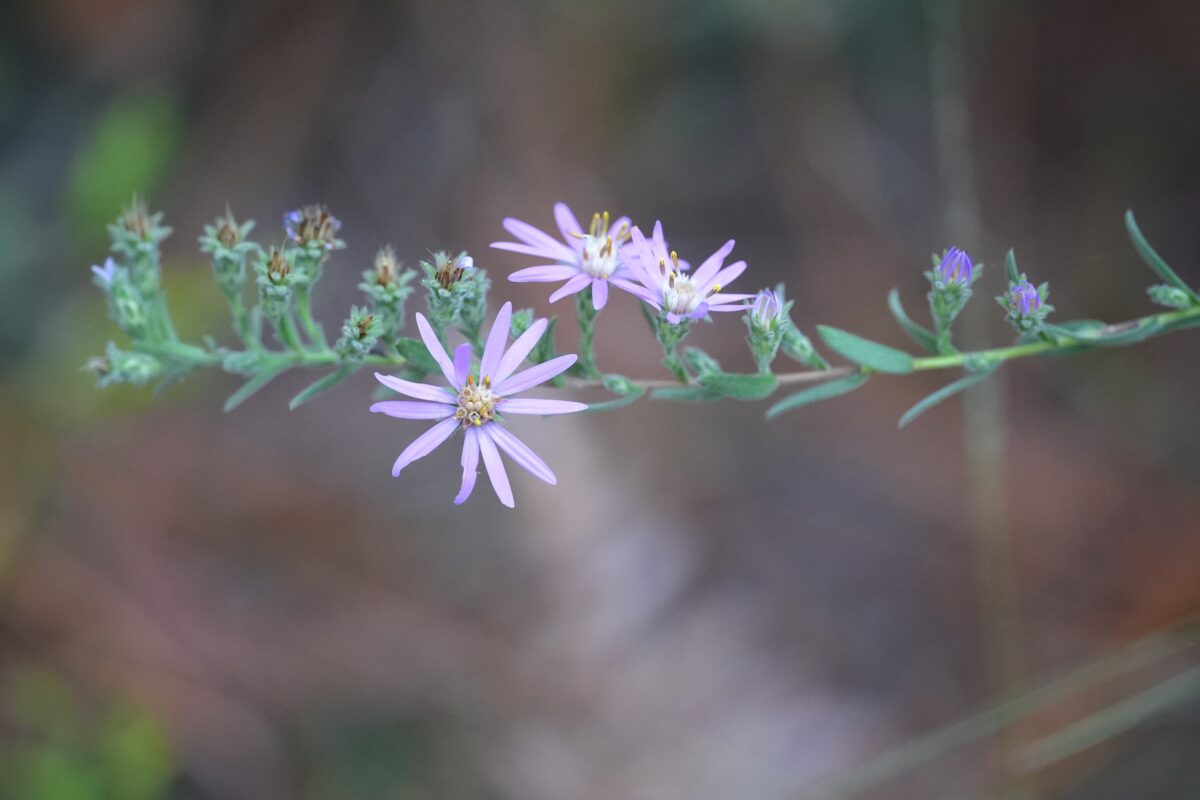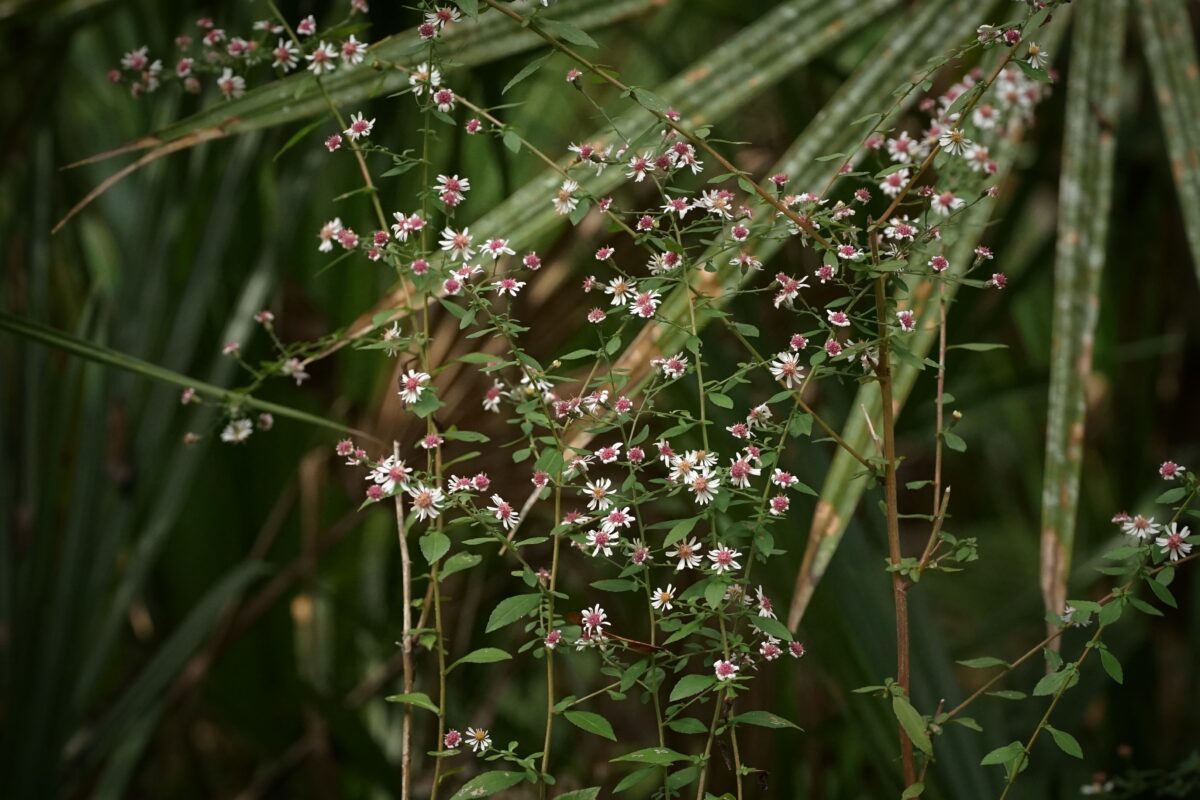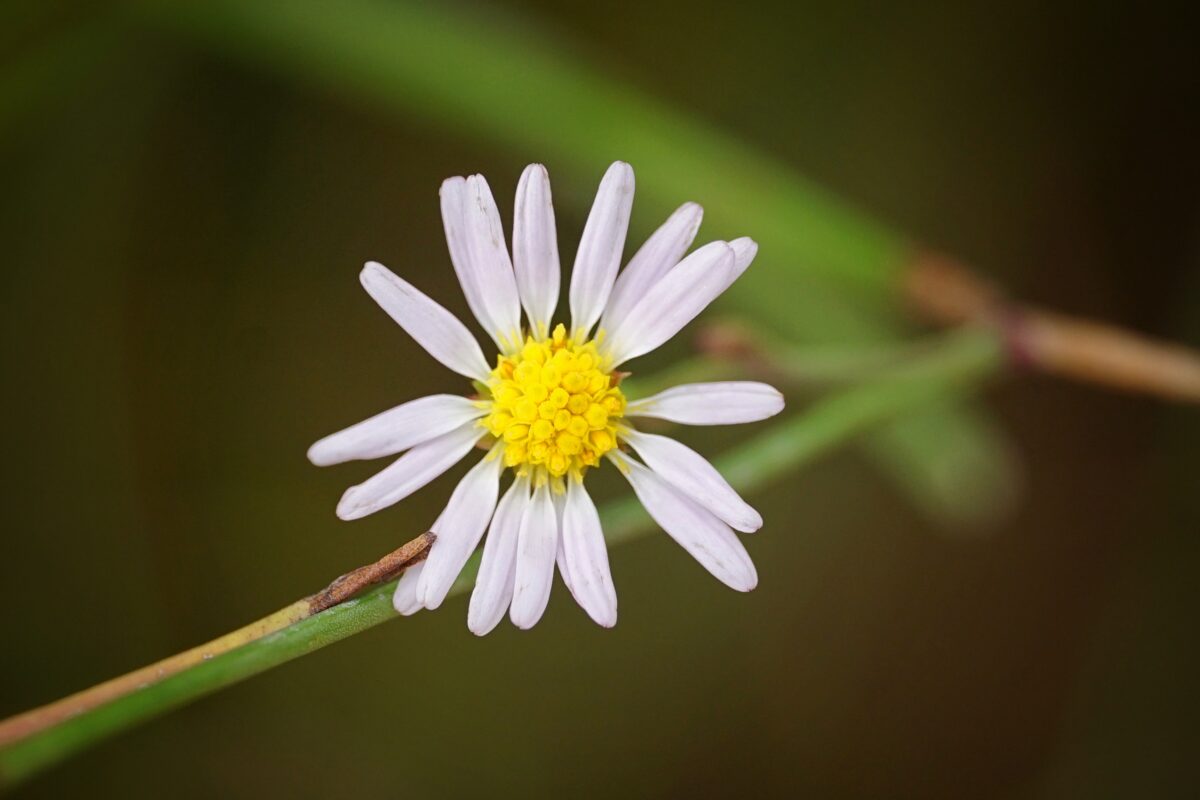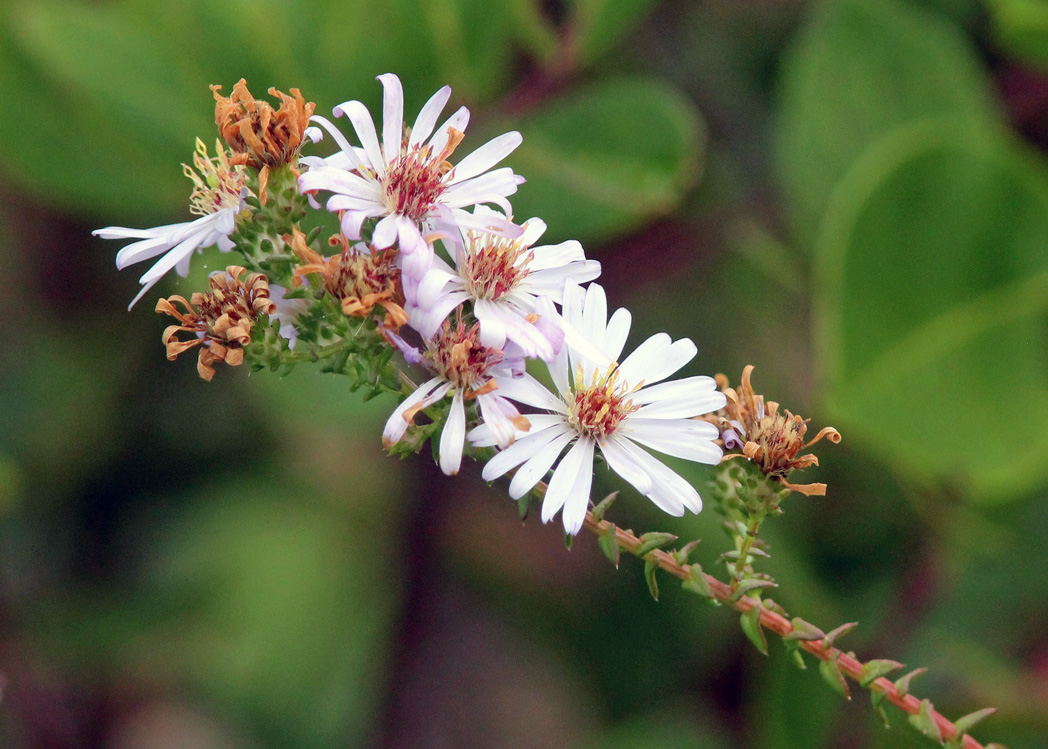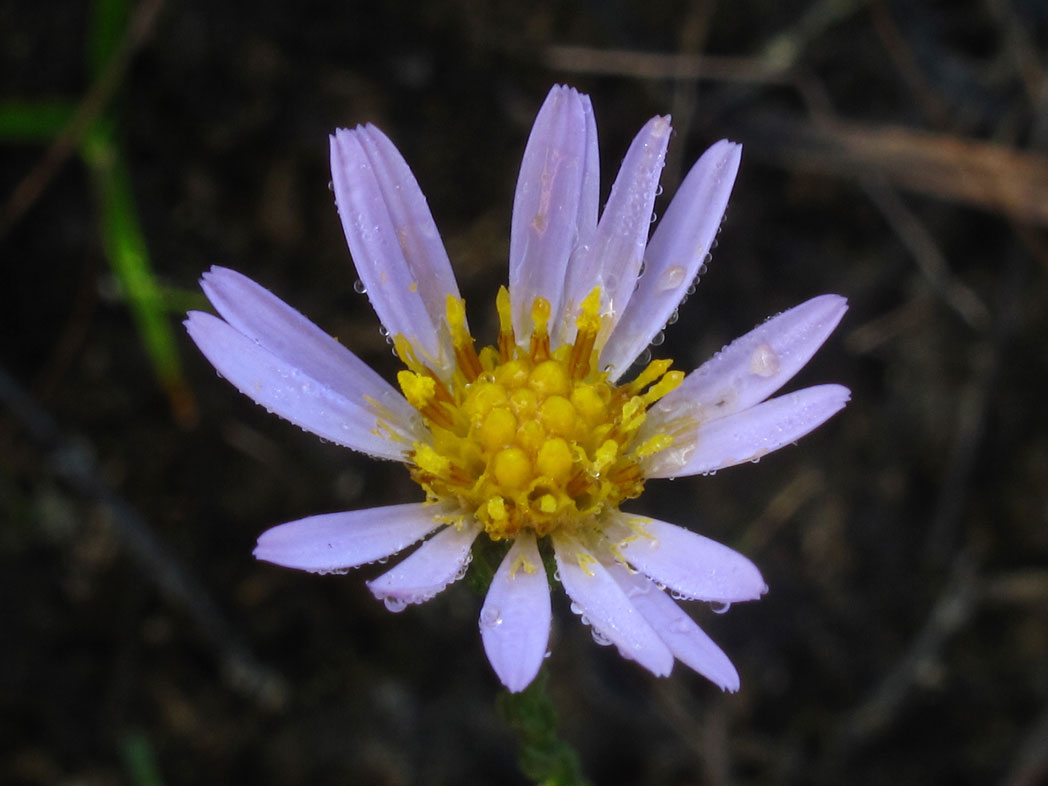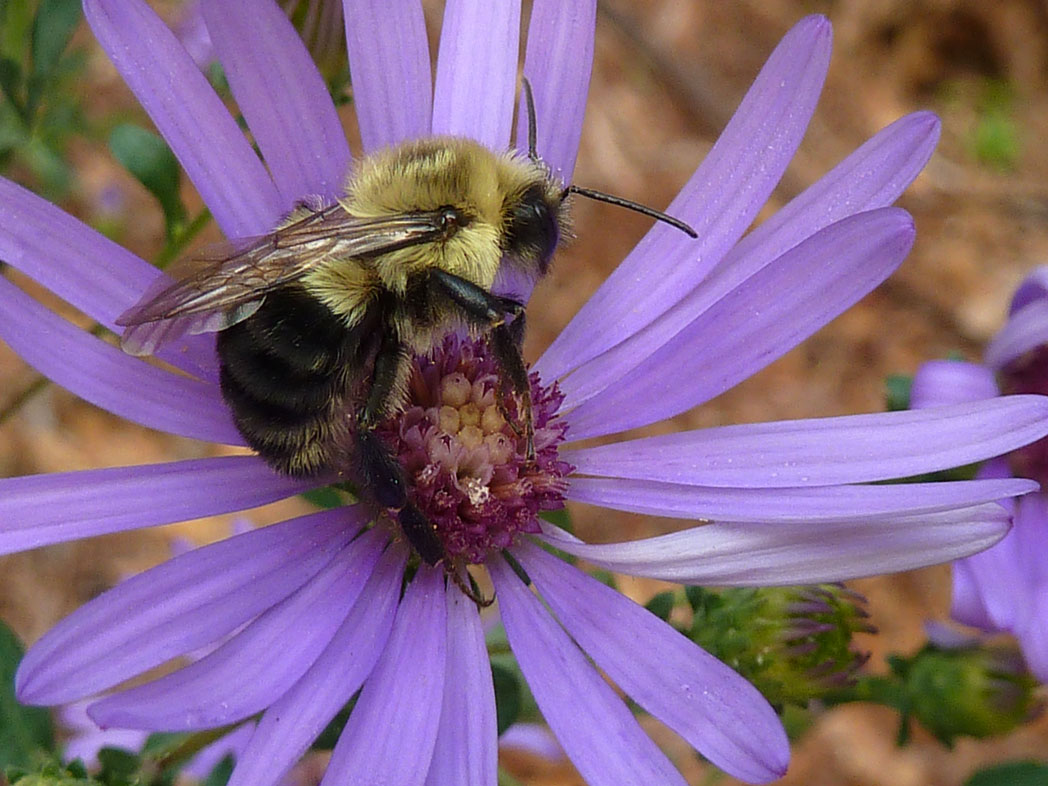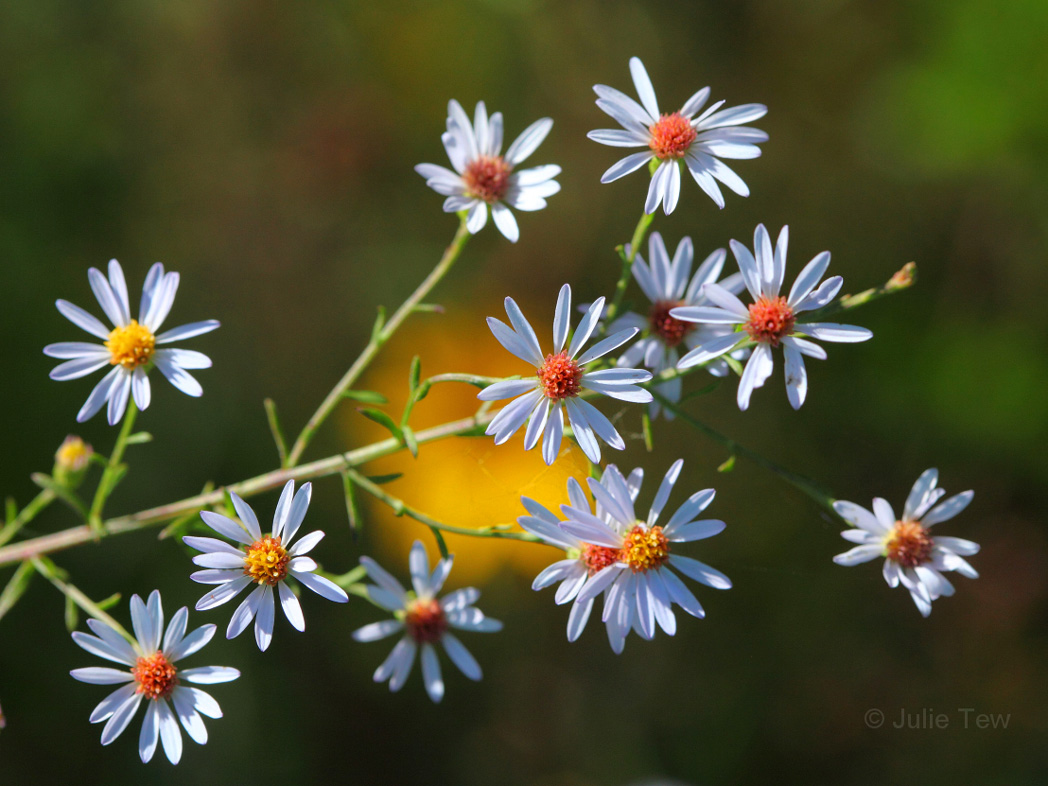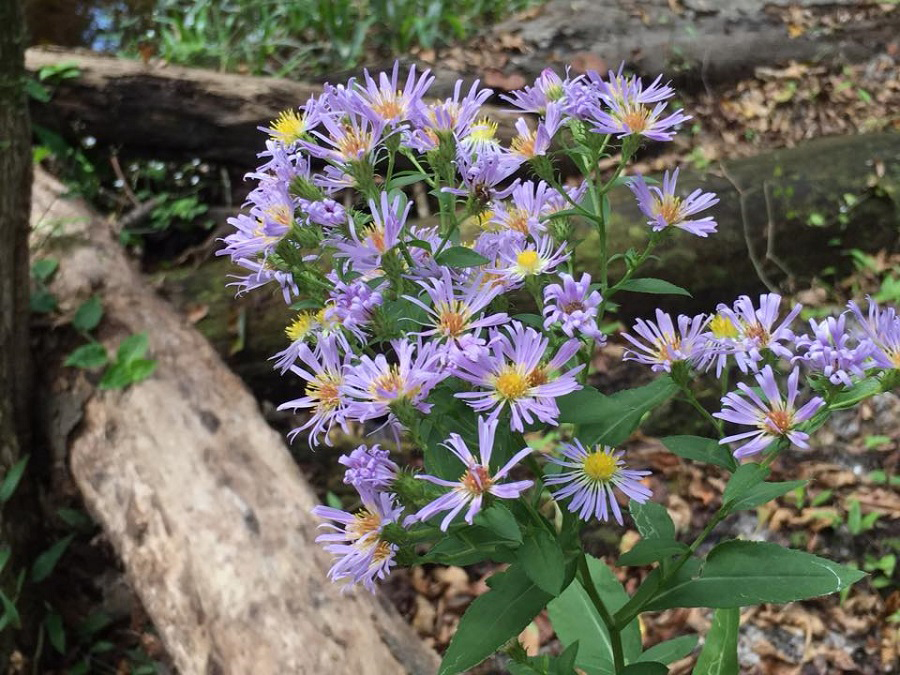Simmond’s aster
Pictured above: Simmond’s aster (Symphyotrichum simmondsii) by Emily Bell. Click on terms for botanical definitions. View post as a PDF.
Simmond’s aster (Symphyotrichum simmondsii) is endemic to the Southeastern Coastal Plain and while recorded from the Carolinas to Alabama, it is most prevalent throughout peninsular Florida. Occupying various habitats from moist to dry, it forms colonies via long underground rhizomes and typically blooms from October through January.
Small flowers are composed of 18–38 pale lavender to lilac ray florets and 24–37 disk florets that turn reddish with maturity. Leaves are oblanceolate, scabrous and arranged alternately. Stems are rigid and range from sparsely scabrellous to glabrous. (Click here for a detailed botanical description)
Members of the Symphyotrichum genus were once classified in the genus Aster, which contained over 600 species. All have since been reclassified into 10 different genera. The genus name Symphyotrichum is from the Greek sýmphysis, meaning “growing together,” and thríx, or “hair.” It refers to a basal ring of hairs or bristles (pappi) thought to occur on New England aster (Aster novi-belgii, now Symphyotrichum novi-belgii); however, this characteristic is absent in most modern Symphyotrichum species.
Family: Asteraceae (Aster, composite or daisy family)
Native range: Throughout the state
To see where natural populations of Simmond’s aster have been vouchered, visit florida.plantatlas.usf.edu.
Lifespan: Perennial
Soil: Moist to dry calcareous soils
Exposure: Full sun to part shade
Growth habit: Herbaceous, up to 4 feet
Simmond’s aster is not commercially available. Visit a natural area to see it.
For information on other Symphyotrichum species, see these resources:

